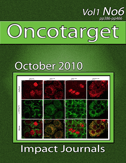Genetic determinants in head and neck squamous cell carcinoma and their influence on global personalized medicine

ABSTRACT
While sequencing studies have provided an improved understanding of the genetic landscape of head and neck squamous cell carcinomas (HNSCC), there remains a significant lack of genetic data derived from non-Caucasian cohorts. Additionally, there is wide variation in HNSCC incidence and mortality worldwide both between and within various geographic regions. These epidemiologic differences are in part accounted for by varying exposure to environmental risk factors such as tobacco, alcohol, high risk human papilloma viruses and betel quid. However, inherent genetic factors may also play an important role in this variability. As limited sequencing data is available for many populations, the involvement of unique genetic factors in HNSCC pathogenesis from epidemiologically diverse groups is unknown. Here, we review current knowledge about the epidemiologic, environmental, and genetic variation in HNSCC cohorts globally and discuss future studies necessary to further our understanding of these differences. Long-term, a more complete understanding of the genetic drivers found in diverse HNSCC cohorts may help the development of personalized medicine protocols for patients with rare or complex genetic events.
oncotarget impact Zoya Demidenko Dr. Zoya N. Demidenko Zoya N. Demidenko , Ph.D. is Executive Manager of the Oncotarget journal . Oncotarget publishes high-impact research papers of general interest and outstanding significance and novelty in all areas of biology and medicine: in translational, basic and clinical research including but not limited to cancer research, oncogenes, oncoproteins and tumor suppressors, signaling pathways as potential targets for therapeutic intervention, shared targets in different diseases (cancer, benign tumors, atherosclerosis, eukaryotic infections, metabolic syndrome and other age-related diseases), chemotherapy, and new therapeutic strategies. After earning her Ph.D. in molecular biology, Zoya was awarded a Fogarty post-doctoral Fellowship from the National Institutes of Health in Bethesda, MD. After successful completion of post-doctoral training, she continued her professional career at George Washington University and Albert Einstein School of Medicine . In 2005 she cofounded the startup company Oncotarget Inc. which is focused on the development of anti-aging and anti-cancer drugs. Her research interests include signal transduction, cell cycle and cellular senescence, and their pharmacological targeting. In 2009 she cofounded the publishing house Impact Journals which specializes in publishing scientific journals. In 2011 she was selected to be a Member of the National Association of Professional Women .
Mikhail (Misha) V. Blagosklonny graduated with an MD and PhD from First Pavlov State Medical University of St. Petersburg, Russia. Dr. Mikhail V. Blagosklonny has then immigrated to the United States, where he received the prestigious Fogarty Fellowship from the National Institutes of Health. During his fellowship in Leonard Neckers’ lab at the National Cancer Institute (NCI), he was a co-author of 18 publications on various biomedical themes, including targeting HSP90, p53, Bcl2, Erb2, and Raf-1. He also was the last author for a clinical phase I/II trial article.
After authoring seven papers during a brief yet productive senior research fellowship in the El-Deiry Cancer Research Lab at the University of Pennsylvania, Dr. Blagosklonny returned to NCI to work with Tito Fojo. Together, they published 26 papers. Moreover, Dr. Blagosklonny published many of experimental research papers and theoretical papers as sole author. The abovementioned sole-author articles discussed two crucial topics. The first of these discussed selectively killing cancer cells with deregulated cell cycle or drug resistance via verifying their resistance. The outcomes and underlying notion were so revolutionary that they were incorrectly cited by other scientists as “reversal of resistance,” even though the publication was titled, “Exploiting of drug resistance instead of its reversal.” One big supporter of this concept was the world-famous scientist Arthur Pardee, with whom Dr. Blagosklonny co-authored a joint publication in 2001.
The second theme throughout Dr. Blagosklonny’s sole-author articles is a research method to develop knowledge by bringing several facts together from seemingly irrelevant areas. This results in new notions with testable forecasts, which in turn can be “tested” via analyzing the literature further. Likewise, the concept was co-authored by Arthur Pardee in a 2002 article in Nature. The first success of the new research methodology was the description of the feedback regulation of p53, as confirmed by the discovery of mdm2/p53 loop; and the explanation why mutant p53 is always overexpressed, published in 1997. The most important result revealed by Dr. Blagosklonny’s research methodology is the hyperfunction (or quasi-programmed) theory of aging and the revelation of rapamycin as an exclusively well-tolerated anti-aging drug, published in 2006. As mentioned in Scientific American, Michael Hall, who discovered mTOR in 1991, gives Dr. Blagosklonny credit for “connecting dots that others can’t even see.”
In 2002, Dr. Blagosklonny became associate professor of medicine at New York Medical College. He agreed to accept responsibilities as a senior scientist at Ordway Research Institute in Albany, New York, in 2005, before receiving another position at Roswell Park Cancer Institute as professor of oncology in 2009.
Since coming to Roswell Park Comprehensive Cancer Center in 2009, Dr. Blagosklonny has studied the prevention of cancer (an age-related disease) via stopping organism aging - in other words, “preventing cancer via staying young.” His laboratory closely worked together with Andrei Gudkov’s and conducted research on the suppression of cellular senescence, namely suppression of cellular conversion from healthy quiescence to permanent senescence. This led to the discovery of additional anti-aging medicines beyond rapamycin. The cell culture studies were complemented by studies in mice, including several models like normal and aging mice, p53-deficient mice, and mice on a high-fat diet.
Dr. Blagosklonny has also published extensively on the stoppage of cellular senescence via rapamycin and other mTOR inhibitors, life extension and cancer stoppage in mice, and combinations of anti-aging medicines to be taken by humans. A rapamycin-based combination of seven clinically available medications has been named the “Koschei Formula” and is now used for the treatment of aging in patients at the Alan Green Clinic in Little Neck, New York.






